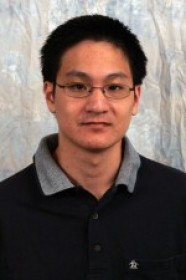
4:00 pm to 12:00 am
Event Location: NSH 1507
Abstract: Subterranean environments are among the most hazardous, remote and unexplored in the solar system. Subsurface applications represent the prime unexploited opportunity for robotic modeling, yet robot mappers are seldom utilized. Human survey is often preferred for reasons of economy, resulting in unnecessary risk and substandard quality. There is urgent need to explore, document, and evaluate these spaces with robots and to do so in a superior and efficient manner beyond the state-of-the-art.
The proposed thesis explores the use of active illumination and intensity imaging in the subterranean domain to generate and enhance existing geometric models. While underground environments are among the most challenging for robots, their dark, uniform, rocky and physically constrained nature enables a variety of physics-based sensing techniques which are not pertinent elsewhere. Synergistic integration of calibrated imagery in the LIDAR sensing process results in models with increased accuracy, sample density and readability. By leveraging the prevalence of existing illumination and imaging sensors along with post-processing capability, this work promises broad significance.
Contributions from this thesis will extend the state-of-the-art in several ways. Future discussion is anchored by experimental characterization of the subterranean domain using principles of sensor physics: material, illumination and geometry. In particular, material reflectance characterization using gonioreflectometry will generate the first underground BRDF database. The correctness of common vision assumptions in this domain, implications to intensity image techniques, and relevance to other domains are addressed. Methods for range and image fusion are devised to enhance and optimize aspects of model quality in the context of these principles, including geometric super-resolution, image-directed optimal sampling, and next view exploration. Novel methods for visualizing the resulting models are presented from Point Rendering to Non-Photorealistic display. Finally, implementations on mobile mapping robots and field experimentation at a coal mine and moon-yard are documented.
Committee:William “Red” Whittaker, Chair
Srinivasa Narasimhan
David Wettergreen
Larry Matthies, Jet Propulsion Laboratory
